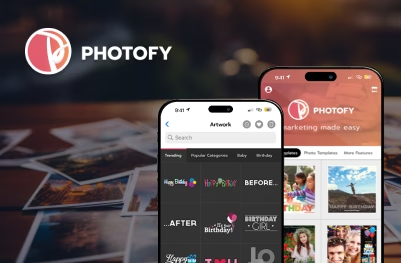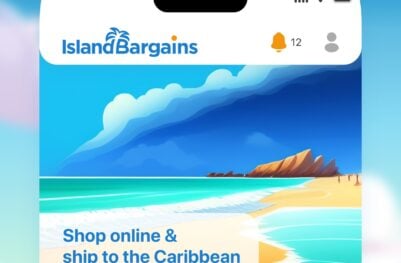- Developers
- Developer Blog
- Software Development
- How to Test MVP?

profile

By Aran Davies
Verified Expert
8 years of experience
Aran Davies is a full-stack software development engineer and tech writer with experience in Web and Mobile technologies. He is a tech nomad and has seen it all.
If you are creating a minimum viable product (MVP), then you need to know how to test an MVP. Read on, as we explain the various ways to test MVPs:
1. Raising funds
Will experienced investors want to fund the development of your project and MVP? If they do, then you probably have a sound minimum viable product.
Experienced investors scout around the market for great ideas. They want to invest in promising startup ideas.
If you can have experienced investors test your MVP, then you can get valuable insights. How can you get experienced investors to test an MVP?
Use a platform like Kickstarter to raise funds for your project. Many expert investors check out these platforms routinely. They can find your MVP there and test it. You get feedback, furthermore, you get funds from them to cover the development costs.
2. Communicating the product idea on a blog
Do you have a popular blog with a large reader base? You can communicate your MVP idea on that blog. Since you already have many readers, your product idea gets good exposure.
Focus on what users will get from your MVP. Avoid the implementation details. Don’t include technical jargon when explaining the MVP idea in a blog post.
Potential users among your readers can comment on the product’s functionality. Respond to the comments and ask for more feedback. You can then gauge the level of user interest in your MVP.
3. Organizing customer interviews
Interviewing customers is an important MVP testing strategy. Online surveys and feedback are important, however, they aren’t the same as face-to-face customer interviews.
You need to dedicate sufficient time to interview potential customers. Explain your product idea to them. Elaborate on how it will deliver tangible value to target customers.

Get a complimentary discovery call and a free ballpark estimate for your project
Trusted by 100x of startups and companies like
Subsequently, you need to listen attentively. Pay attention to the spoken words. However, pay even greater attention to non-verbal cues. This MVP testing technique can give excellent insights if you do it right. You can get a fair idea about the market demand and viability of the proposed product.
4. Creating explainer videos
You can create an explainer video to test your MVP. It’s one of the highly effective MVP testing strategies.
At the time of creating this video, your product might not even exist. That’s fine though. You don’t want to create a product demonstration video.
Potential customers only need to know what’s there for them in the product. Therefore, you only need to explain the functions of the product. Avoid explaining the technical details.
Provide a way for the users to engage with the video. You need to let users comment on it. Use analytics tools to derive insights from these engagements and comments. You can then gauge the user’s interest.
5. Launching pre-order pages
You can launch pre-order pages for MVP testing. Your team might still work on the actual product development when you launch pre-order pages.
This MVP testing strategy suits books. It also suits complex physical products like gadgets. You need to describe the product in an engaging manner, however, the description must be realistic.
Remember that you are asking potential customers to order a product even before its launch. You need to convince the potential users well enough for that.
Track orders placed on pre-order web pages. Utilize leading user analytics tools. You can then gain valuable insights, furthermore, you can gauge the market interest.
6. Conducting social media surveys
You can conduct social media-based surveys to test an MVP. A key advantage of this approach is that you can use existing tools for this.
Social media platforms have massive reach, therefore, the survey will likely get good exposure. You can expect a considerable number of responses.
Social media surveys are quick. Potential users of your product don’t need to deal with complex survey forms.
The above-mentioned advantages are notable, however, you need to get these surveys right. Ask very few questions, and ask specific ones. You should ask questions that help you to gauge the market viability of the product. A long list of survey questions will result in a low response rate.
7. Creating paper prototypes
Organizations with cost limitations can use paper prototypes to great effect to test an MVP. This inexpensive approach greatly reduces the MVP development time. You simply create a paper-based prototype in this approach. You can even draw a sketch.
Depict the various functionalities of your MVP on a piece of paper. Let the prospective users view it and think about it.
You can have the product designers view the paper prototype, who can then brainstorm ideas. You can validate product ideas while respecting cost limitations. This approach suits physical products.
8. Sending emails to the target audience
You can augment your overall MVP testing effort by sending emails to potential customers. Track the engagement metrics. You will find out how the email recipients view your product idea from these metrics.
Monitor metrics like open rate and click rate. You can use one of the many email marketing tools for such campaigns.
Hire expert developers for your next project
1,200 top developers
us since 2016
This approach can only support your larger MVP testing efforts. Email engagement metrics might not correlate with how well your MVP might be received. Furthermore, you need a list of potential users.
9. Creating landing pages
You can create a landing page to test an MVP. Potential customers first view this page when you visit your website. You can explain your product idea on the landing page, which will enable customers to understand it.
Describe your product in a factual manner. However, make this description exciting. You need to strike a balance.
You must have specific objectives when creating this landing page, and the page should help the visitors focus on that objective. Remove everything else that might distract the potential users.
Use tools like Google Analytics to measure user engagement. You can judge the market interest from this.
10. Comparing the MVP against competitive products
Your product might not always be unique. Your competitors might have already launched similar products. Utilize the presence of such competitive products to test your MVP.
Analyze the products of the competitors keenly. Compare them with your product ideas. Identify the features they offer that you don’t plan to offer.
Gather insights on user engagement for the competitive products. Analyze the popularity of the various features. Identify the unique features that you plan to offer since these could be your triumph cards.
11. Running A/B tests
You can run A/B tests for MVP testing. This approach suits when you are launching a website or web app as a part of your MVP. You need the website visitors to take an important action, and you need to find out the best web design for that.
Create two versions of the webpage. Use the two most-preferred web designs in them. Identify a list of potential customers. Divide this list randomly, and create two segments. Have each segment test one version of the webpage.
Use tools like Google Analytics to measure user engagement. You should finally choose the version with better engagement metrics.
12. Creating piecemeal MVPs
What if you want to save development time? You might not want to spend any significant time and effort in the MVP development process. Can you still create an MVP and test it? You certainly can. Piecemeal MVPs can help you.
You create a piecemeal MVP without developing anything significant on your own. In the present era of open-source software, you have plenty of software solutions for nearly every situation. Many of them are open-source software. WordPress, a popular open-source CMS (content management system) is an example. In some cases, there are cheap 3rd party software products.
Use such existing platforms and tools to create an MVP. Such an MVP should be a functional product even if it doesn’t have the unique stamp of your organization. You can launch it and test market viability.
13. Running PPC (pay-per-click) campaigns
You can use PPC campaigns to test MVPs. This approach helps you to reach out to your target audience. Use analytics tools to learn how well the PPC campaign works. You can then get insights into how actual customers receive your product.
Exercise caution when using PPC campaigns for MVP testing. There could be low user engagement due to flaws in the ad. Review this aspect and improve your ad if applicable. If you still see low user engagement, then you might need to change the MVP.
14. Conducting micro-surveys
While surveys are quite common, micro-surveys are quite different. You have very few questions in a micro-survey. Such surveys might have 2 or 3 questions only, therefore, online users can respond to them quickly.
You will notice a better response rate to micro-surveys than general surveys. You can use them for MVP testing. Design the questionnaire carefully, and only have 2-3 relevant questions. Use an analytics tool to gain insights from the survey responses.
Hire expert developers for your next project
15. Launching ad campaigns
In this day and age, you can easily create and run ad campaigns using an Internet-based platform. You can use these ad campaigns for MVP testing.
At this stage, you don’t need an actual product. Provide sufficient information about the product in the ad.
Online advertising platforms provide robust analytics and reports. Review them so that you can find the user engagement for the ad campaign. This way, you can find out the market viability of your product idea.
16. Building MVPs using SaaS or PaaS tools
What if you want to develop an MVP without spending a considerable effort on application development? You could do that if you had a development kit!
SaaS no-code platforms can help you. Some of them even offer out-of-the-box apps that you can configure. You can build an MVP quickly using them. Such platforms help you to increase the reach of the app.
Alternatively, you can use a PaaS (Platform-as-a-Service) platform. You need to code in this option. However, PaaS platforms manage the cloud infrastructure, operating systems, middleware, databases, and runtime environments. You can develop MVP apps quickly using them.
You can then launch it. Track customer feedback to learn whether the MVP fails or succeeds.
17. Launching a manual-first MVP
You can use a manual-first MVP for MVP testing if you want to skip the MVP development stage. Assume that you want to build an online store to deliver a physical product. You run an ad campaign. You build a landing page where visitors can order your product online.
Subsequently, you do everything manually. This includes order management, delivery, accounting, etc. Your potential customers get what they want. They don’t know how you manage the background operations, which they don’t need to know anyway.
You can get market feedback. You have to run the operations manually, which takes some effort. You saved the MVP development costs though.
18. Creating a single-feature MVP
You can conduct focused MVP testing by launching a single-feature MVP. In this approach, you choose the most impactful feature of your product. Create an MVP with only that feature.
Once you launch the MVP, track the feedback from users. You gauge how well the most important feature of your product is received in the market. If needed, you modify or redesign the main feature.
The other features are important. However, you can always test them in the market after you test the main feature.
Planning to develop an MVP? Hire expert developers from DevTeam.Space.
FAQs
An MVP is a functional product with fewer features than what the final product will have. Businesses launch an MVP in quick time. They do this to get market validation for their product idea. Businesses gauge the market viability of their product idea based on honest feedback from target customers.
You should not skip the MVP testing phase. You get valuable user feedback when you conduct MVP testing. Customer feedback is the best indicator to judge if you have a sound business model and product idea. MVP validation provides this feedback to you despite spending minimal effort.
You should use metrics that fit your MVP testing strategy. A few examples are the average revenue per user, customer acquisition costs, feedback from customers during interviews, and the number of pre-orders received.

Alexey Semeney
Founder of DevTeam.Space
Hire Alexey and His Team To Build a Great Product
Alexey is the founder of DevTeam.Space. He is award nominee among TOP 26 mentors of FI's 'Global Startup Mentor Awards'.
Alexey is Expert Startup Review Panel member and advices the oldest angel investment group in Silicon Valley on products investment deals.


